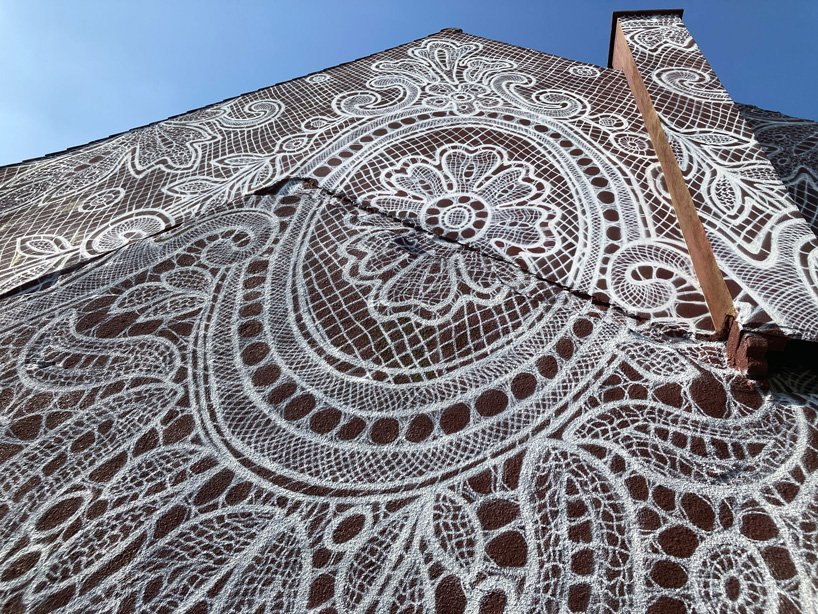
NeSpoon’s latest project in Calais, France.
Image courtesy of: Design Boom
The Polish street artist NeSpoon is best known for using lace to inspire her artwork. The contemporary artist is on a mission to beautify abandoned and neglected spaces in urban places. With NeSpoon’s magic touch, she is able to turn buildings into unique works of art.
NeSpoon, whose name is Elżbieta Dymna, is from Warsaw and hopes to enrich the diverse world of urban art with her unique brand of lace art. The process of taking the almost forgotten tradition of doily-making and turning it into art has given the humble domestic trait a “second chance,” and a plethora of new possibilities.
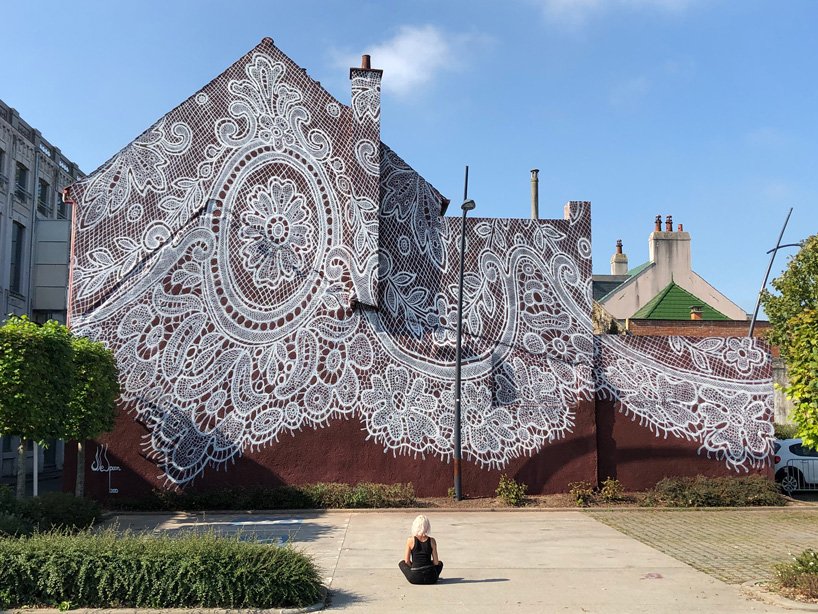
The “covered” museum is called Cite de la Dentelle et de la Mode.
Image courtesy of: Design Boom
This recent mural beautifully explores Calais’ lace tradition in grand style as it covers the facade of the city’s fashion and lace museum. The city is located in northern France and was the hub of lace making the early 19th-century. During this time, British lacemakers left England’s economic unrest and harsh patent taxes to settle in France.
The movement led to a population “explosion” with nearly 40,000 people gaining employment in the lace factories. The rich history of lace in Calais made this the ideal location for NeSpoon’s installation.
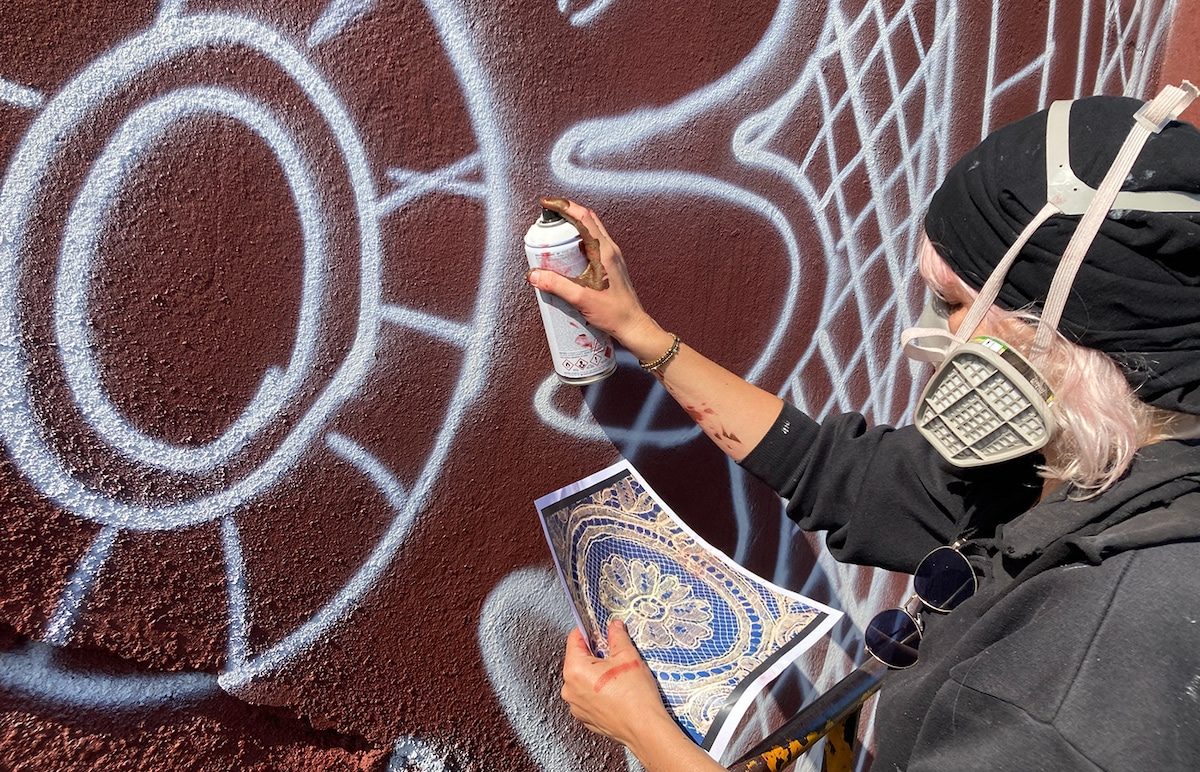
NeSpoon at work…
Image courtesy of: My Modern Met
As always, NeSpoon researches local lace patterns and plans her work with those in mind. This mural was no different; however for once, there were so many patterns to choose from. The pattern Nespoon chose was designed in 1894. At this point in time, the building was used as a lace factory and the entire area was dedicated to this growing art form. At the peak, there were more than eighty lace looms in the factory. Luckily, several looms remain as a part of the museum’s collection. Interestingly, it can take up to twelve years for a loom worker to master control of up to 11,000 threads at once.
NeSpoon does not weave the lace herself, she uses the designs of others to create cobweb-like clouds that are normally foreign to urban locations. Sometimes she reinterprets the lace patterns into murals and etched images.. giving harsh cityscapes a new softness with intricate filigree.
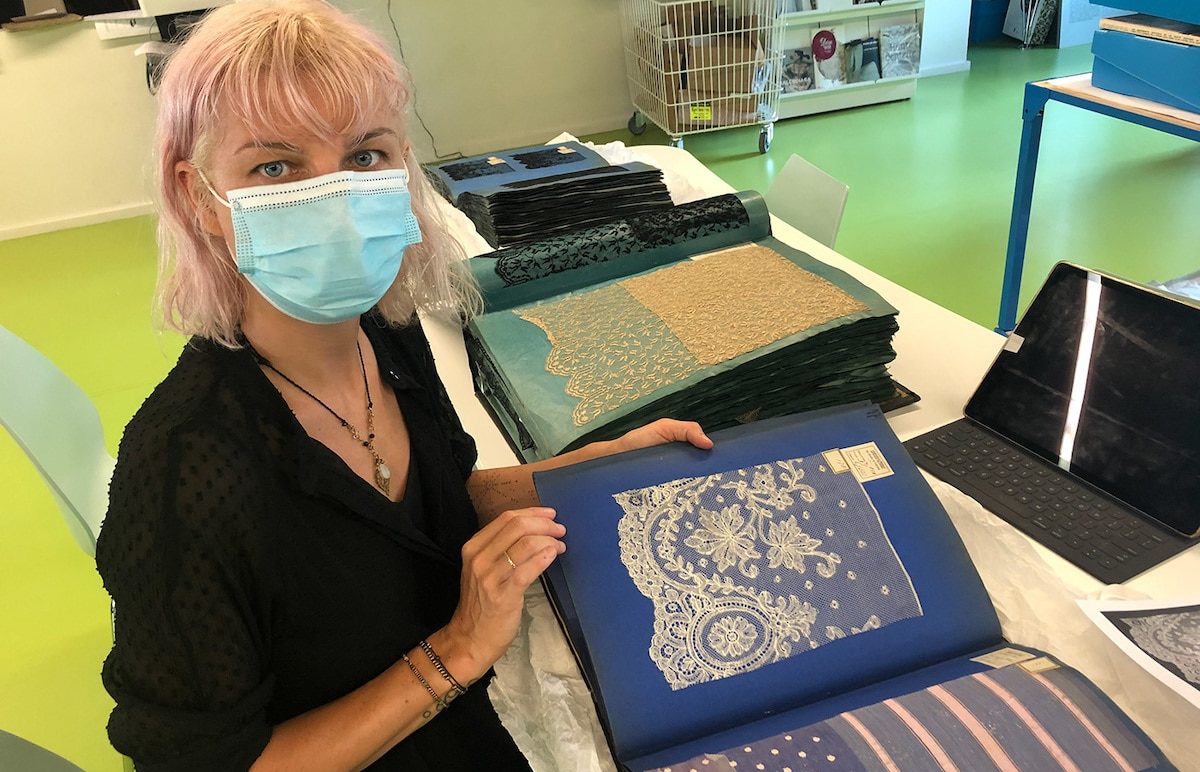
NeSpoon going through the museum’s catalog archives.
Image courtesy of: My Modern Met
NeSpoon regales in focusing on a feminine art form. Working with lace is universally associated with women. She says (courtesy of The Huffington Post), “I think that no man would use the laces as a medium. I travel a lot and all over the world only women weave laces. Maybe it’s proof that we are the source of natural harmony in the universe. It flows out of us.”
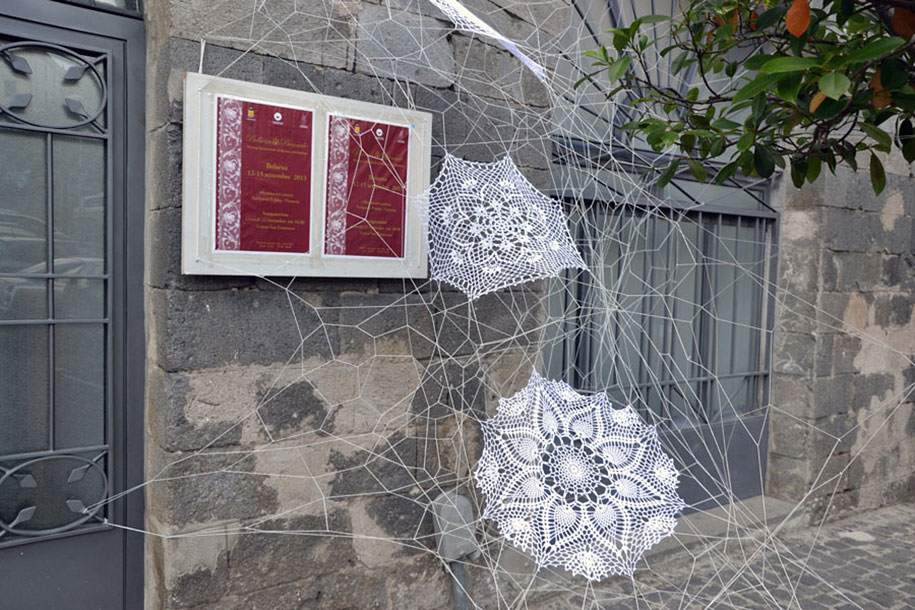
A different alliteration of NeSpoon’s work.
Image courtesy of: DeMilked
NeSpoon loves the fact that lace is becoming a modern art form in people’s perception. We love what she says (courtesy of My Modern Met), “For 10 years, when I deal with lace motifs, I have noticed a growing interest in this art. In the beginning, it was unfashionable, kind of ‘grandma’s thing.’ Today, in many countries, I meet young girls who are making lace and are interested in this tradition- it is very positive. I hope that what i do shows lace in a new perspective and helps keep this craft alive.”